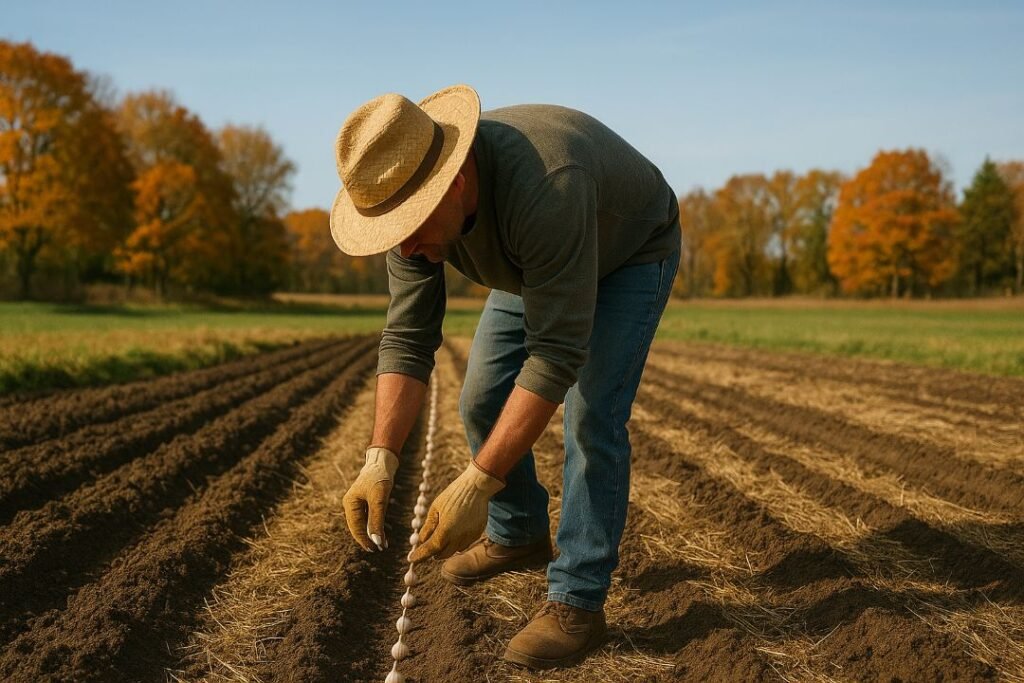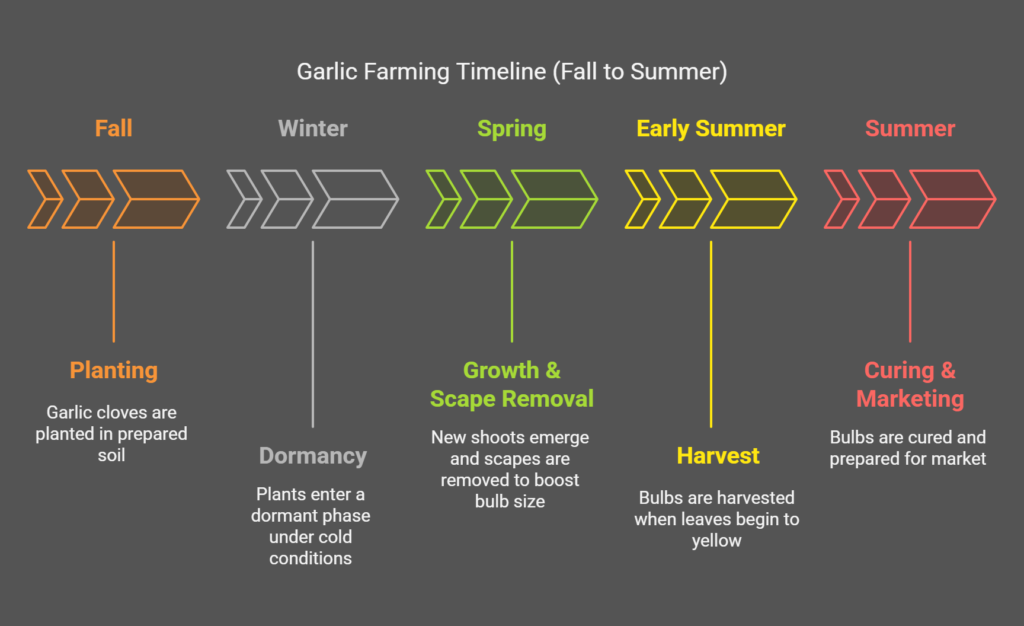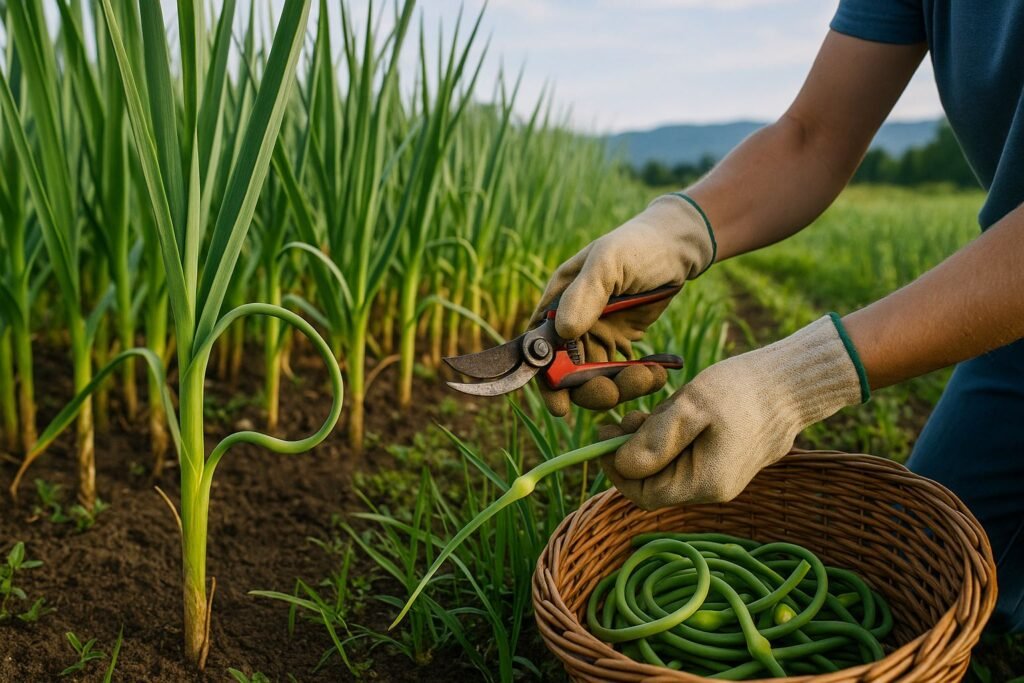
Introduction
Garlic isn’t just a kitchen staple, it’s a high-value cash crop that smallholder farmers across the Western world are turning to for stable income and sustainable production. With rising consumer interest in organic and locally grown foods, this crop is gaining ground as one of the most profitable crops to grow on a small scale. Whether you’re farming in the U.S., Canada, or parts of Europe, this crop offers a smart pathway toward regenerative agriculture and financial viability.
1. Why Garlic is a Smart Crop for Small Farmers
The plant stands out as a crop that aligns perfectly with the goals of small-scale, eco-conscious farming. Here’s why:
- High Market Demand: It is a staple ingredient in nearly every cuisine. Its demand is consistent year-round across retail stores, restaurants, and food processors.
- Long Shelf Life: Unlike many perishable crops, this crop can be stored for several months when properly cured.
- Low Input Costs: Once established, garlic requires minimal care compared to other vegetables.
- Organic-Friendly: Garlic thrives in organic systems as it naturally resists many pests and diseases.
- Small Land Footprint: Even a quarter-acre can yield a decent harvest and profit.
2. Top Garlic Varieties Grown in the West
Western farmers typically grow two main types of garlic:
🔸 Hardneck Garlic (Allium sativum var. ophioscorodon)
- Best for: Cold climates like the Northern U.S., Canada, and parts of Europe.
- Popular Varieties: Rocambole, Porcelain, Purple Stripe.
- Pros: Strong flavor, larger cloves, produces scapes (bonus harvest).
- Cons: Shorter shelf life than softneck varieties.
🔸 Softneck Garlic (Allium sativum var. sativum)
- Best for: Warmer areas like California, Southern Europe.
- Popular Varieties: Silverskin, Artichoke.
- Pros: Longer shelf life, higher yields.
- Cons: Smaller cloves, less cold-hardy.
👉 Tip: Choose varieties suited to your local climate. Many farmers grow a mix of both types to balance storage and flavor diversity.
3. Ideal Conditions for Garlic Farming
This crop is relatively adaptable but thrives best in conditions that mimic its native Central Asian origins.
Soil Requirements
- Type: Loamy, well-drained, rich in organic matter.
- pH: Slightly acidic to neutral (6.0 to 7.0).
- Tip: Avoid heavy clay or poorly drained soils to prevent bulb rot.
Climate and Temperature
- Requires cold exposure (vernalization) for clove development, thus fall planting is best.
- Tolerates frost but not waterlogging.
Best Planting Time
- Fall (Sept–Nov) is ideal in most regions, about 4–6 weeks before the ground freezes.
- Spring planting is possible but may lead to smaller bulbs.
4. Step-by-Step Garlic Cultivation Guide (with Best Practices)

1. Land Preparation
- Till the soil to 6–8 inches depth.
- Add compost or well-rotted manure to boost soil fertility.
- Use cover crops (e.g., legumes) before garlic to improve soil structure naturally.
2. Clove Selection and Planting
- Use large, healthy cloves from disease-free bulbs.
- Plant with the pointed end up, 2 inches deep, and 6 inches apart in rows.
- Leave 12–18 inches between rows.
Tip: Don’t peel the cloves; the outer layer protects against pests and moisture loss.
3. Irrigation and Mulching
- The plant needs consistent moisture during the growing season but hates soggy soil.
- Apply organic mulch (straw, leaves) to:
- Conserve moisture
- Suppress weeds
- Protect against temperature fluctuations
4. Pest and Disease Management (Natural Methods)
- Rotate crops yearly—avoid planting garlic or other alliums in the same soil for 3 years.
- Use neem oil spray or garlic tea for aphid control.
- Maintain clean fields and destroy infected plants to prevent white rot or nematodes.
5. Scape Removal
- For hardneck garlic, cut scapes once they curl—this boosts bulb size.
- Scapes are edible and marketable as gourmet produce.
5. Harvesting and Post-Harvest Handling

When to Harvest
- Bulb is ready when the lower 3–4 leaves turn brown, and upper leaves remain green.
- Avoid harvesting too early (small bulbs) or too late (split wrappers).
How to Harvest
- Gently loosen soil and lift bulbs by hand or with a garden fork.
- Do not pull them out by the stem—it can damage the bulb.
Curing and Storing
- Hang or place garlic in a well-ventilated, shady spot for 2–4 weeks.
- Trim roots and stems after curing.
- Store at 60°F (15°C) with 60% humidity.
👉 Proper curing enhances flavor, shelf life, and market value.
Detailed this cropc cultivation guidelines are available from Penn State Extension:
🔗 Garlic Production Guide – Penn State Extension
6. Garlic Market Opportunities in Western Countries
This crop opens multiple income streams beyond just bulk sales:
Direct Market Channels:
- Farmers’ markets
- CSA (Community Supported Agriculture) boxes
- Health food stores
- Farm-to-table restaurants
Niche & Value-Added Products:
- Organic garlic
- Black garlic (fermented)
- Garlic braids for décor and culinary use
- Seed garlic for home growers
Note: Local, chemical-free garlic often sells for 3–5x the price of imported, supermarket garlic.
7. Profit Potential and Cost Breakdown
Estimated Yield (Per Acre):
- 10,000–15,000 pounds of garlic bulbs depending on variety and spacing.
Market Prices:
- Wholesale: $2–$4 per pound
- Retail: $6–$12 per pound (organic, specialty varieties)
Cost Breakdown (Approximate per acre):
| Item | Cost (USD) |
|---|---|
| Seed Garlic | $3,000 – $5,000 |
| Labor & Mulch | $1,000 – $2,000 |
| Irrigation/Fertilizer | $500 – $1,000 |
| Misc. (tools, transport) | $500 – $1,000 |
| Total | ~$5,000 – $9,000 |
Gross Revenue Potential:
- $20,000 – $60,000 per acre depending on market channel
8. Tips to Maximize Garlic Farming Success
- Use cover cropping and composting to maintain soil health.
- Diversify sales: wholesale + value-added products.
- Save your own best-performing cloves for seed each year.
- Invest in good post-harvest handling to maintain quality.
- Build an email list or social media presence for loyal customers.
Conclusion
Garlic is more than just a flavorful bulb—it’s a gateway crop to sustainable profit for small farmers in the Western world. With minimal space, organic-friendly practices, and strong demand, garlic offers a resilient income stream aligned with best agricultural practices. Whether you’re an aspiring market gardener or a transitioning organic farmer, now is the time to plant the seeds of success—literally.
Interested in another high-value crop? Check out our in-depth guide on profitable mushroom farming!